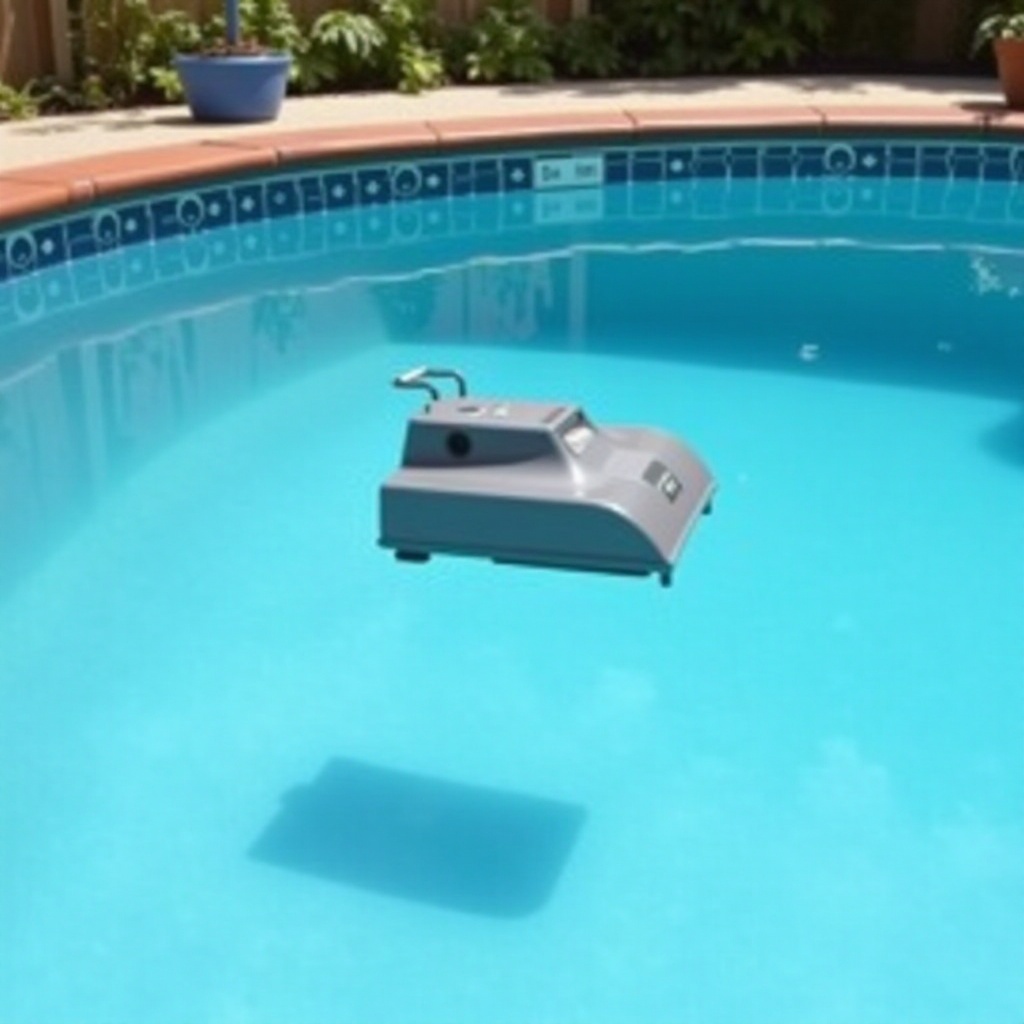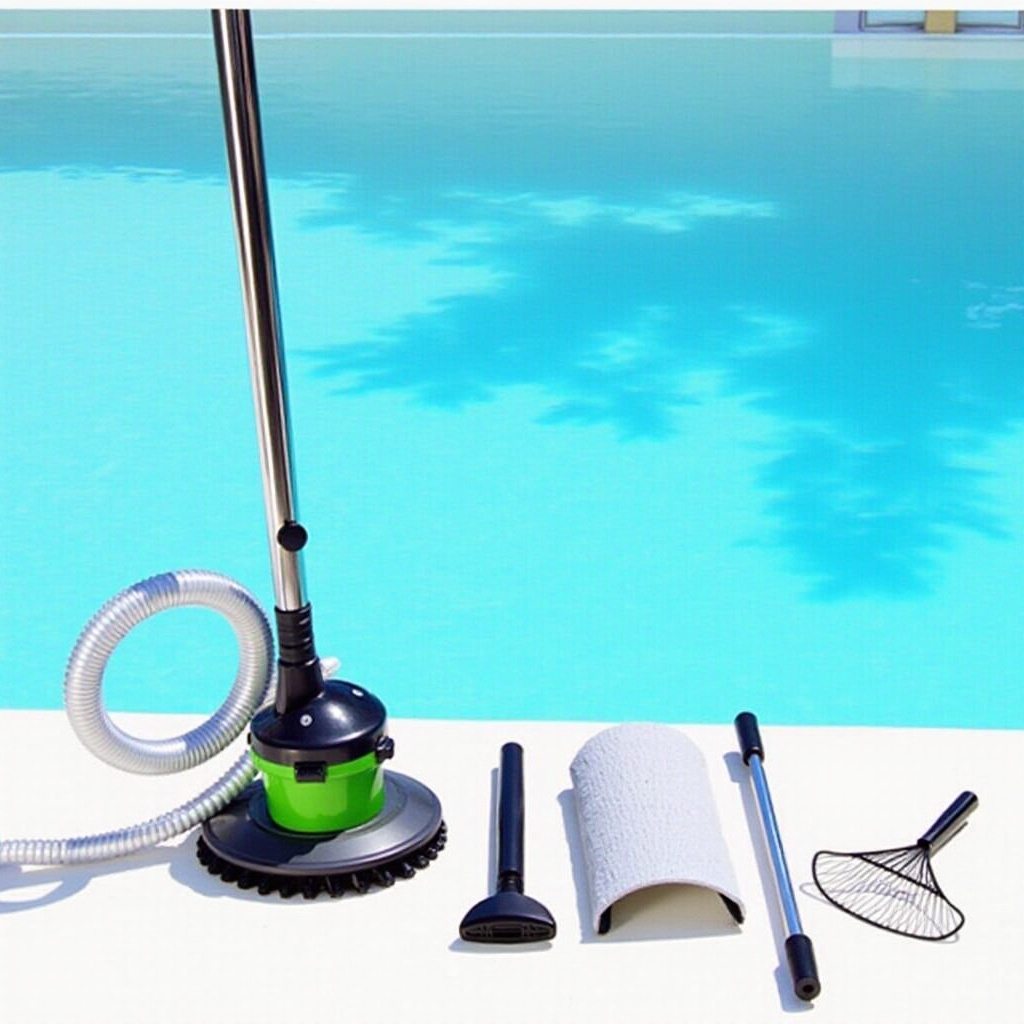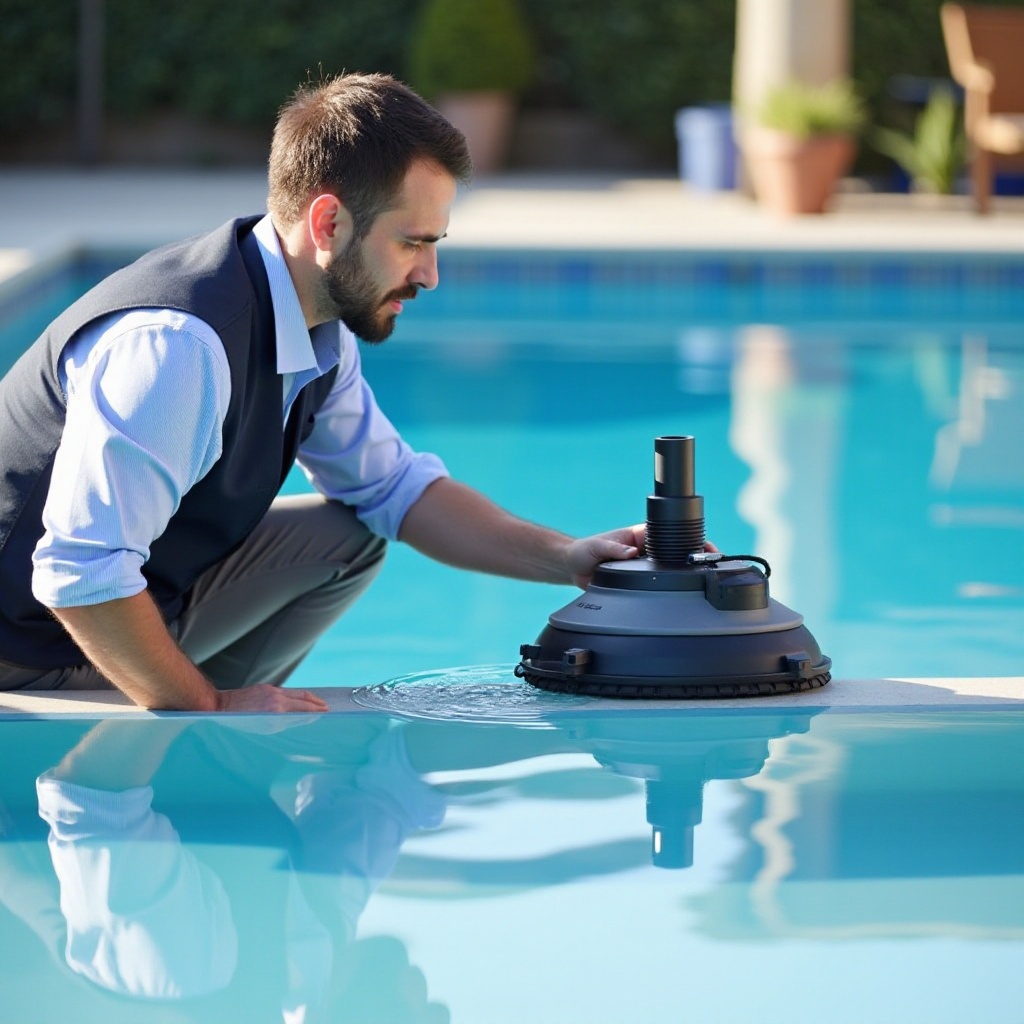Introduction
Keeping your pool clean and free from debris is essential for maintaining a healthy swimming environment. Understanding how to use a pool vacuum effectively can make this task much more manageable. In this comprehensive guide, we will walk you through the detailed steps on using a pool vacuum so you can keep your pool in pristine condition. From gathering your supplies to troubleshooting common issues, we’ve got you covered.

Gather Your Supplies
Before you start, ensure you have all the necessary supplies. Having everything on hand will make the process smoother.
- A pool vacuum head
- A telescopic pole
- A vacuum hose
- A hose adapter (if needed)
- A pool pump and filter system
These components are crucial for setting up your pool vacuum. Ensure that your equipment is in good condition, as damaged or worn-out parts can hinder the effectiveness of the vacuuming process.

Setup Your Pool Vacuum
Setting up your pool vacuum correctly is essential for efficient cleaning. Here’s how to do it:
Connecting the vacuum head to the telescopic pole
- Attach the vacuum head to one end of the telescopic pole.
- Secure it tightly to ensure it doesn’t come loose during the vacuuming process.
Attaching the hose
- Connect one end of the vacuum hose to the vacuum head.
- Attach the other end of the hose to the suction port or the skimmer inlet on your pool.
Make sure all connections are tight to prevent air leaks, which can reduce suction power.
Prime the Hose
Priming the hose removes air and prepares the vacuum for effective suction. This step is crucial for optimal performance.
Manual method
- Submerge the entire hose in the pool, allowing it to fill with water.
- Hold one end of the hose while keeping it underwater.
- Securely attach it to the vacuum port to prevent air from entering.
Submersion method
- Attach the hose to the vacuum head and then submerge it fully in the pool.
- Hold the free end and place it against the pool’s return jet.
- When bubbles stop coming out of the vacuum head, quickly connect the hose to the suction port.
Both methods ensure the hose is filled with water, eliminating any air pockets that could disrupt the vacuum’s performance.
Start Vacuuming Your Pool
Now that your vacuum is set up and primed, it’s time to start cleaning.
How to move the vacuum head
- Begin at the shallow end of the pool and gently move the vacuum head back and forth across the pool surface.
- Move slowly to avoid stirring up debris and creating cloudy water.
Tips for effective vacuuming
- Clean the pool in overlapping sections to cover the entire area thoroughly.
- Focus on high-traffic areas and corners where debris tends to accumulate.
- If you notice decreased suction, check the hose for air pockets and prime again if necessary.
Consistent and methodical vacuuming ensures your pool remains clean and inviting. Take your time and work systematically for the best results.
Finish Up and Clean Your Equipment
Once you’re done vacuuming, it’s essential to clean and store your equipment properly. After vacuuming your pool, it’s equally important to take good care of your equipment to ensure its longevity.
Disconnecting and cleaning steps
- Disconnect the hose from the suction port and telescopic pole.
- Remove the vacuum head and clean any accumulated debris.
- Drain any water left in the hose and store all components in a dry, shaded area.
Storing the vacuum
Store your pool vacuum in a clean, dry place away from direct sunlight to prevent damage to the components, extending the life of the equipment.
Common Pool Vacuum Issues and Troubleshooting
Even with the best care, you might encounter issues. Here are some common problems and solutions:
Lost suction
- Check for air leaks in the hose.
- Prime the hose again to eliminate air pockets.
- Clean the filter, as a dirty filter can reduce suction power.
Blockages
- Inspect the vacuum head and hose for obstructions.
- Clear out any debris that may be clogging the system.
Damaged parts
- Regularly inspect the vacuum head, pole, and hose for wear and tear.
- Replace damaged parts promptly to ensure optimal performance.
Addressing these issues swiftly ensures your pool vacuum remains effective and prolongs the equipment’s lifespan.

Maintenance Tips for Your Pool Vacuum
Maintaining your pool vacuum is essential for long-lasting use:
- Rinse the vacuum head and hose after each use.
- Store in a dry, protected area to avoid wear and tear.
- Regularly check and replace any worn-out parts.
Simple, routine maintenance keeps your vacuum in good working condition, ensuring your pool stays clean.
Conclusion
Using a pool vacuum may seem daunting at first, but with the right approach, it becomes a straightforward process. By following this guide step by step, you’ll be able to maintain a clean and inviting pool effortlessly. Regular use and proper maintenance of your pool vacuum will ensure your swimming area is always ready for enjoyment.
Frequently Asked Questions
How often should I vacuum my pool?
Vacuum your pool at least once a week to keep it clean, especially during the swimming season. More frequent vacuuming may be necessary if the pool is used heavily or exposed to debris.
Can I use the vacuum for algae cleanup?
Yes, but be thorough and meticulous. Move the vacuum head slowly over the algae and clean the filter frequently to prevent clogging.
What should I do if my vacuum loses suction?
Check for air leaks, ensure the hose is primed correctly, and clean or replace the filter as needed.
